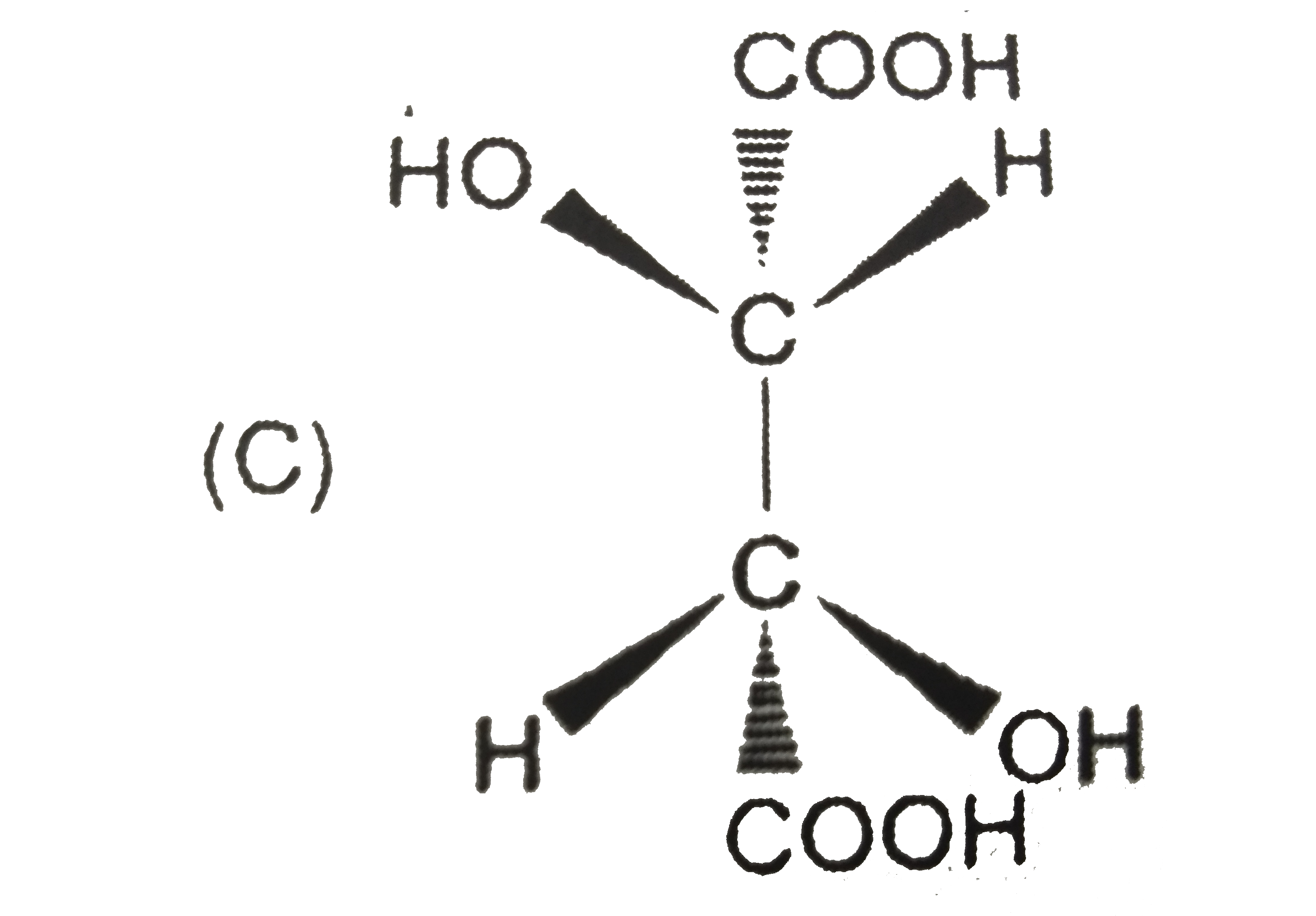Tartaric acid [HO2CH(OH)CH(OH)CO2H] was an important compound in history of stereochemistry.
Two naturally occuring forms of tartaric acid are optically inactive. One optically inactive form (P) has a melting point of 210-212∘C and can be separated into two optically acitve forms, whereas other optically inactive form (Q) cannot be resolved further.
A optically inactive form P is :
Optically inactive due to internal compensation.
Optically inactive due to presence of plane of symmetry.
Optically inactive due to external compensation.
Optically inactive due to intramoleuclar hydrogen bonding.
The correct Answer is:C
Topper's Solved these Questions
- STEREOISOMERISMBOOK - RESONANCECHAPTER - STEREOISOMERISMEXERCISE - EXERCISE (PART -1 JEE (ADVANCED))
17 Videos
- STEREOISOMERISMBOOK - RESONANCECHAPTER - STEREOISOMERISMEXERCISE - EXERCISE (PART -II JEE (MAIN))
16 Videos
- STEREOISOMERISMBOOK - RESONANCECHAPTER - STEREOISOMERISMEXERCISE - EXERCISE (PART III : ONE OR MORE THAN ONE OPTIONS CORRECT TYPE)
14 Videos
- SOLUTIONSBOOK - RESONANCECHAPTER - SOLUTIONSEXERCISE - Advabced Level Problems (PART-2)
35 Videos
- STRUCTURAL IDENTIFICATIONBOOK - RESONANCECHAPTER - STRUCTURAL IDENTIFICATIONEXERCISE - Advanced level Problems (Part-III)
12 Videos
Similar Questions
Tartaric acid [HO2CH(OH)CH(OH)CO2H] was an important compound in history of stereochemistry.
Two naturally occuring forms of tartaric acid are optically inactive. One optically inactive form (P) has a melting point of 210-212∘C and can be separated into two optically acitve forms, whereas other optically inactive form (Q) cannot be resolved further.
Optically inactive form Q is
View SolutionLactic acid, CH3CHOH.COOH exists in two optically active forms. Explain.
View Solution
Knowledge Check
Tartaric acid [HO2CH(OH)CH(OH)CO2H] was an important compound in history of stereochemistry.
Two naturally occuring forms of tartaric acid are optically inactive. One optically inactive form (P) has a melting point of 210-212∘C and can be separated into two optically acitve forms, whereas other optically inactive form (Q) cannot be resolved further.
Optically inactive form Q isA B
B C
C Dnone of these
Dnone of theseLactic acid (2-hydroxypropanoic acid) is an optically active compound. It can be made optically inactive by
Areplacing its OH group by HBreplacing its OH group by CICreplacing its OH group by BrDnone of the above.Optically active isomer (A) of (C5H9Cl)on treatment with one mole of H2 gives an optically inactive compound (B) compound (A) will be :
ACH3−CH∣CH2Cl−CH=CH2BCl−CH∣CH3=CH−CH3CCH3−CH∣Cl−CH2−CH=CH2DCH3−CH2−CH∣Cl−CH=CH2
Optically active isomer (A) of (C5H9Cl) on treatment with one mole of H2 gives an optically inactive compound (B) compound (A) will be :
View SolutionTwo convex lenses of power 2 D and 3 D are separated by a distance 13m. The power of the optical system formed is
View SolutionThe compound Co(en)2(NO2)2CI has been prepared in these isomeric forms A,B and C A does not react with AgNO3 or (en) and is optically inactive B reacts with AgNO3 but not with (en) and is optically inactive C is optically active and reacts with both AgNO3 and (en) identify each of these isomeric forms and draw their structures .
View SolutionAssertion: Trihydroxyglutaric acid (HO2C−CHOH−CHOH−CHOH−CO2H) exists in four stereoisomeric forms, two of which are optically acitve while the other are meso-forms.
Reason: It contains two asymmeric and one pseudo-asymmeric carbon atom.
View SolutionOptically active isomer (A) of (C5H9Cl) on treatment with one mole of H2 gives an optically inactive compound (B) compound (A) will be :
View Solution
